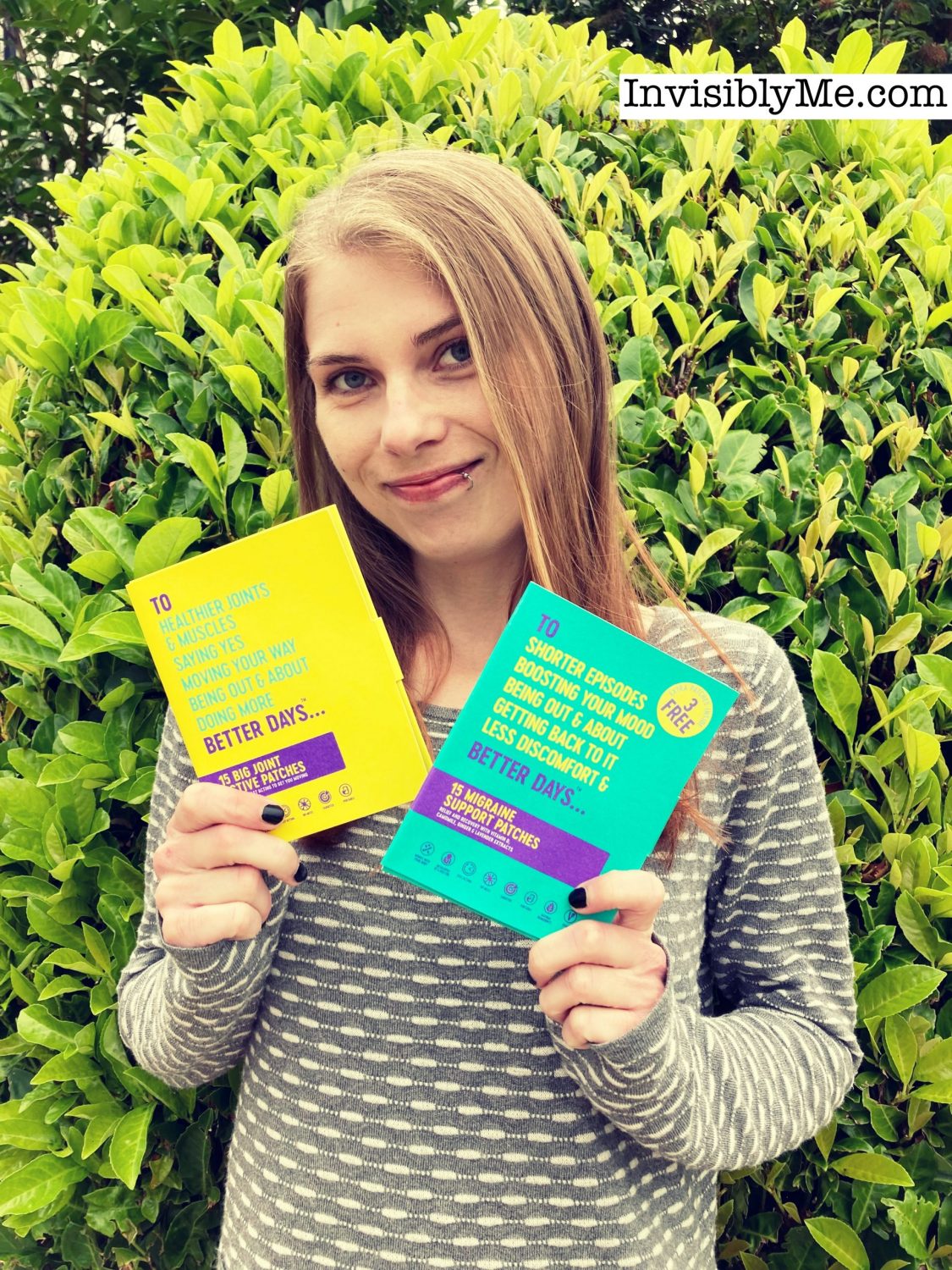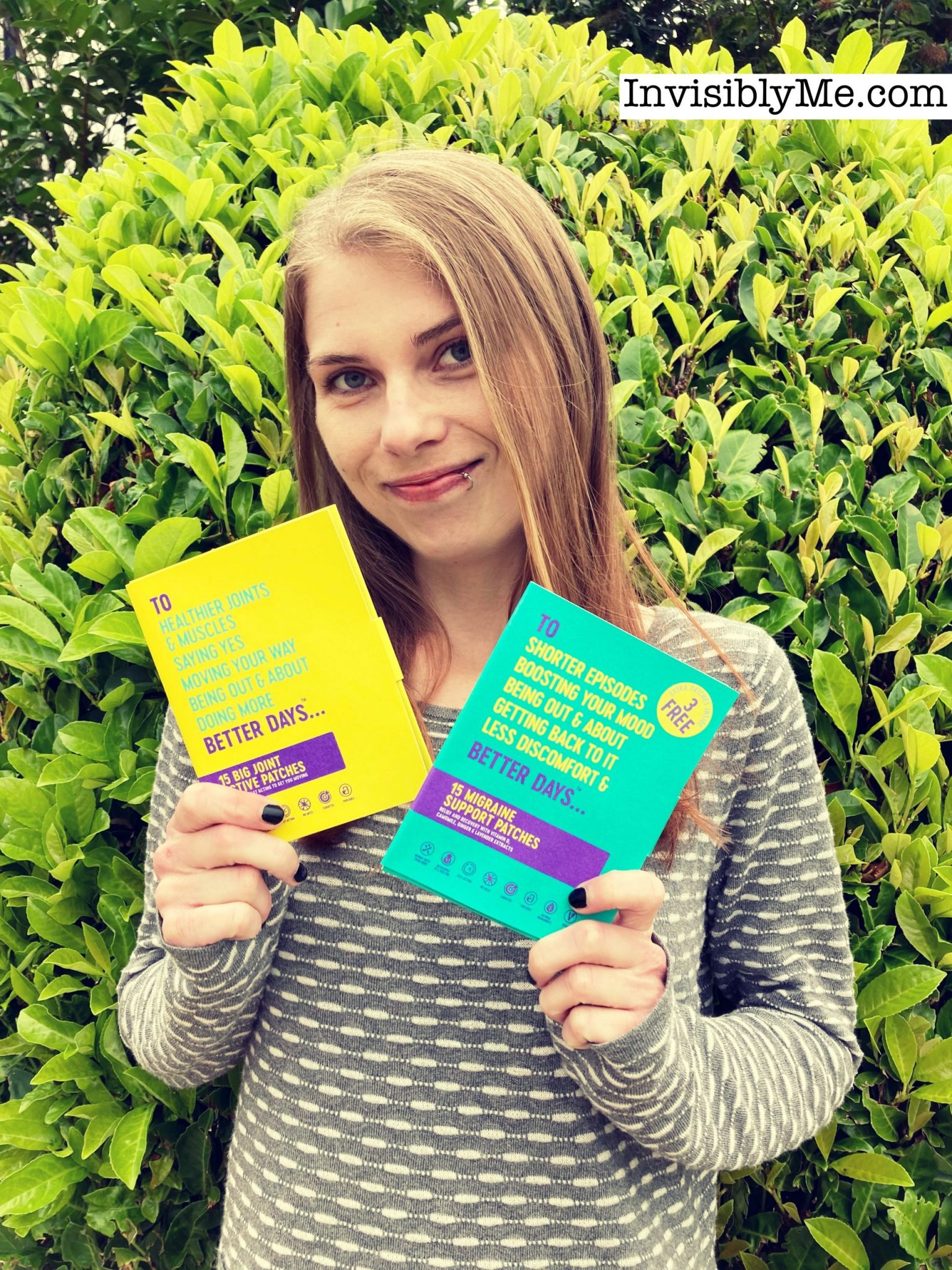
Caz is a blogger and freelance writer living with multiple chronic illnesses and chronic pain. She runs the blog InvisiblyMe. You can also find her on Instagram, Facebook and Twitter. She shared with us her story of living with multiple chronic illnesses and chronic pain.
Tell us a little about yourself
I’m Caz, a 33-year-old tea drinker, over-stresser and blogger living in Gloucestershire (UK) with multiple chronic illnesses and chronic pain. I developed chronic constipation suddenly at age 19, but it was when I had my first surgery in 2015 at age 26 that my health really went down the metaphorical toilet. Seven surgeries and countless emergency department visits later, and I developed a veritable shopping list of issues. I have a stoma bag, autoimmune disease, Sjogren’s, widespread inflammation, nerve damage, chronic migraines, osteopenia, pernicious anaemia, bronchiectasis and lung scarring from infections, and so on. Needless to say, I didn’t keep the receipt otherwise I would have returned them all for a refund!
I lost my job as a community support worker due to the ongoing ops and ill health. I went from hoping to become a Clinical Psychologist, to barely being able to look after myself. The landscape of my life has changed drastically.
To regain a sense of who I was and to find a little purpose, I invest time in fighting for the things I care about and trying to affect change in our healthcare system. I run the blog InvisiblyMe with the hope to raise awareness of different issues, provide a little advice and support, create a community vibe, and hopefully let others know that they’re not as alone as they may feel in their own health journey.

What is the nature of your chronic pain?
Some pain is specific, other painless. For instance, nerve damage affects my lower back and particularly my hips, which is a very debilitating kind of pain. I also live with chronic migraines and problems with muscle and bone around my neck and shoulders.
Other pain is more generalised and non-discriminatory of any particular body part. I was diagnosed with fibromyalgia to account for this, which can entail aches and discomfort, or searing pain all over, particularly in joints.
My pain is chronic, lasting for several years and it never takes a holiday. However, I do also get temporary pain that is ridiculously intense when my small bowel starts dancing and gets itself twisted up, landing me in A&E.
I like to think I have a decent tolerance for pain. I’m not averse to it, so if I know something will hurt like hell for a minute or even an hour, that’s fine by me. But this sort of chronic pain deal is different. It’s every second of every single day for years on end. It’s relentless and overwhelming, and it can be as hellishly frustrating as it is disheartening.
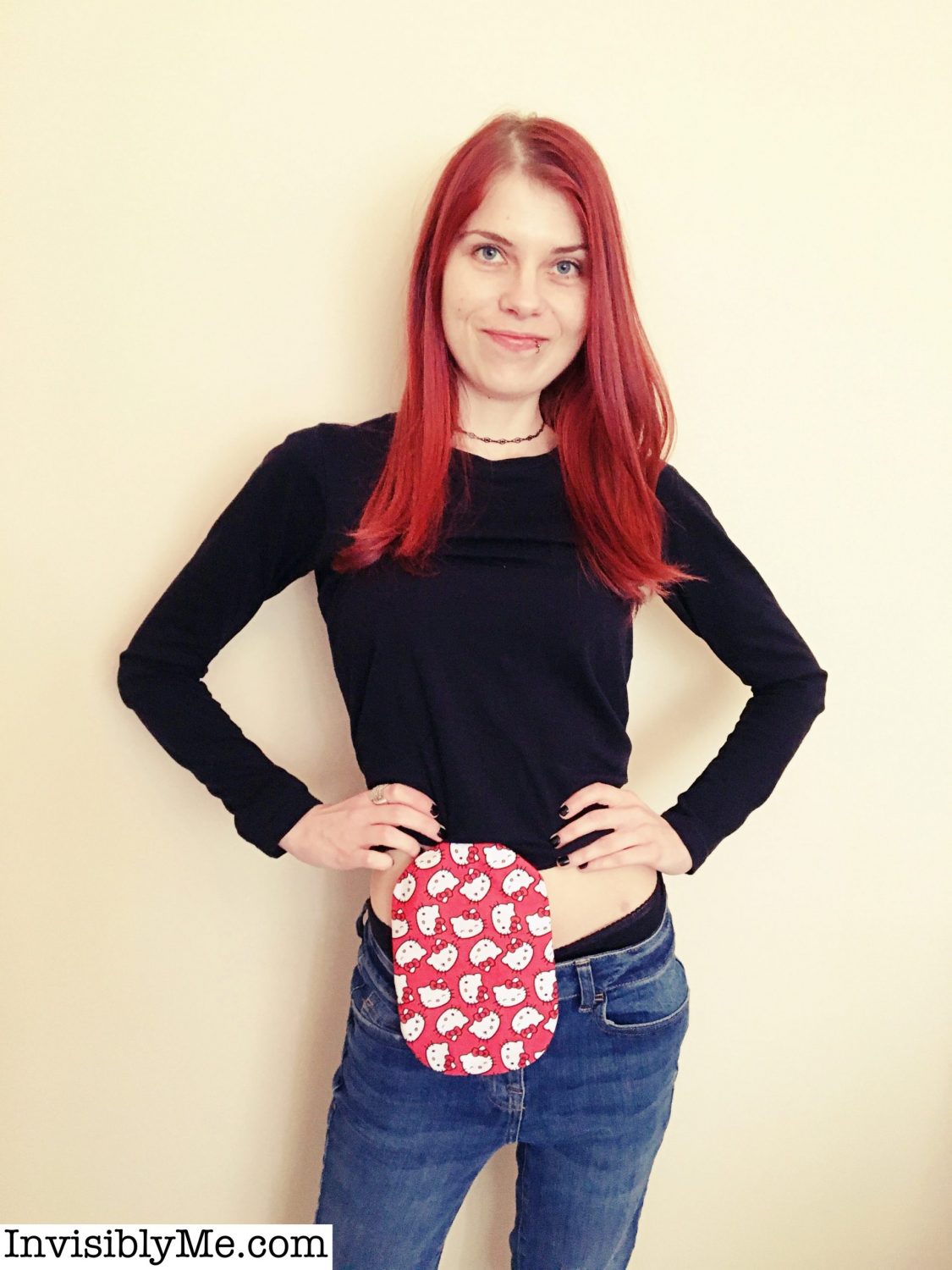
What caused your pain?
In terms of the specific pain, I have nerve damage from my first surgery and from metal screws in my back. This has led to the intense lower back and hip pain. I no longer sit normally in regular chairs because it’s too debilitating with my hips, so I’ve spent the last 6 years mostly propped up in bed to keep my legs straight out in front of me.
I developed problems with my neck and shoulders as this inability to sit normally in regular chairs led to some muscles in my back getting too weak and others overcompensating. The result was partially and fully dislocating shoulders and my shoulders being constantly hitched up several inches too high, which also pulled up my diaphragm and squashed my lungs. It’s an ongoing problem that doesn’t want to rectify itself quickly, no matter my impatience with it.
I get atypical chronic migraines impinging on about 5 days each week. Following recent Sherlockian detective efforts to figure out what is going on, they appear to be caused by inflammation. The worst part is how it feels like there’s an iron rod going through the back of my eyeball and then it’s as if my eyeball could explode. Thankfully it never has as that would be pretty freaky.
While not recognised by many specialists who are unfamiliar with what I’ve been through, it seems I had a fairly significant ongoing autoimmune reaction to an implant during my first surgery, a bit like an allergic reaction. It’s still there and it has caused no end of problems, strange symptoms, and a decline in my health generally, as well as widespread inflammation. This is something I’ve been fighting to change so that other patients don’t have to go through what I have with the surgeon I did, but it’s a slow process of complaints and legal action.
While I encourage others to not feel they have to deal with their pain, illness or other symptoms on their own because of embarrassment, I’ve struggled with this myself. Shutting yourself off because of shame or embarrassment can cause isolation and it can prevent some people from seeking the medical assistance they need, too. While I was going back and forth to doctors for years with constipation, I otherwise kept it a relative secret from friends, colleagues and partners. Now that I have a stoma, I’ve tried to be more open about the bowel issues online and embrace them, but I still can’t bring myself to talk about the first surgery I had because of embarrassment. Maybe one day.
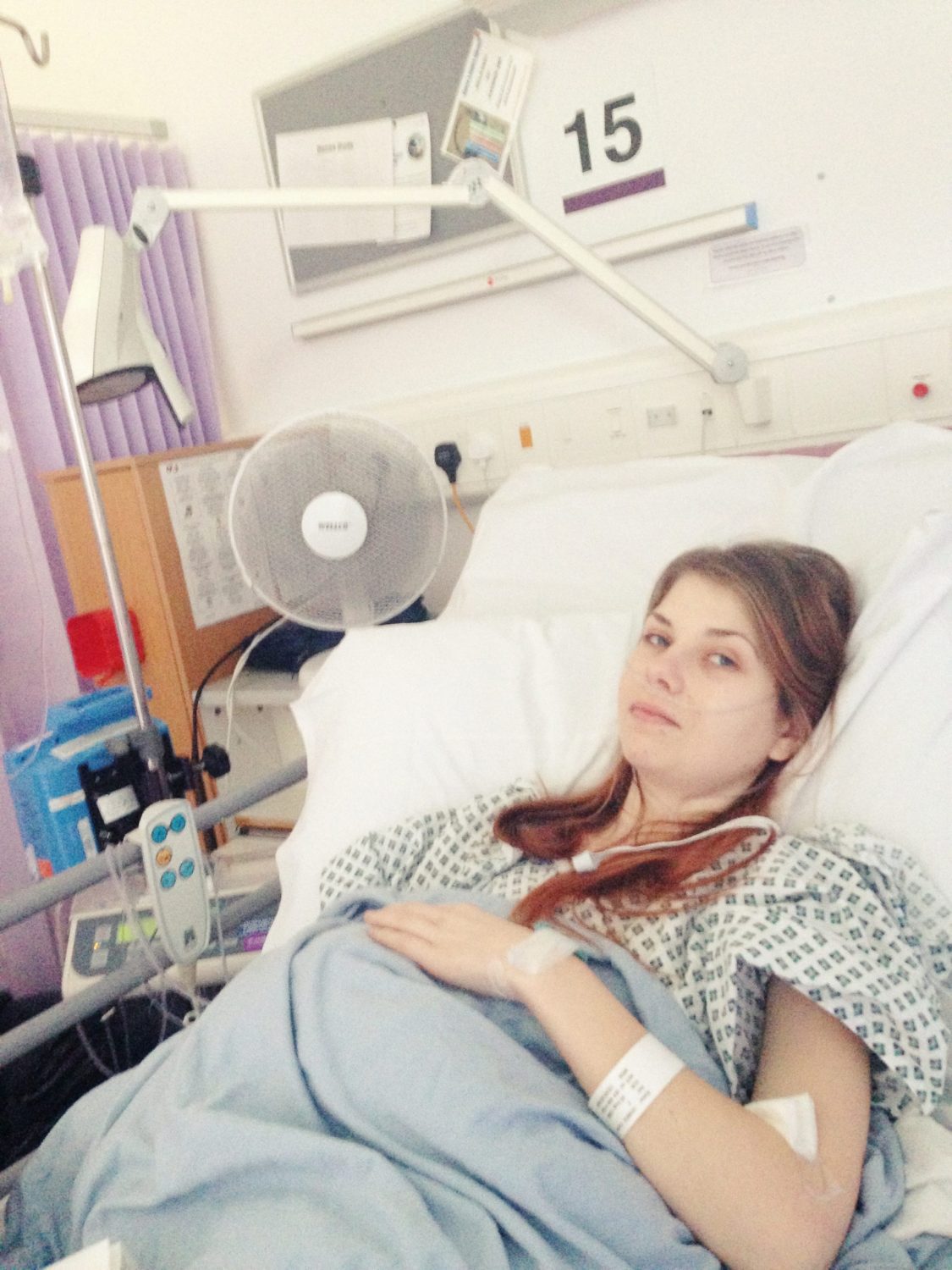
How have you found it has affected your life?
Living with chronic pain every moment has certainly not been easy. Pain can make me irritable, angry, frustrated or just devastated.
I’ve lost a lot from ill health and pain, including friends, a social life, the job I loved, my future hopes of having my own family. Some parts are just too hard to talk about, and yet that may be all the more reason to share them because it’s that kind of raw truth that others might sadly be able to relate to. I feel like I’ve hit rock bottom on a number of occasions. I often think of how there are plenty of people who have things far, far worse than I do. However, what I also say on my blog is how our experiences are uniquely our own. They’re to be valued in their own right and cannot be compared to the experience of others. Doing so just adds another layer of guilt, and I already feel like I’m drowning in the stuff. This guilt appears to not be uncommon among those with chronic conditions.
There are, however, often positives to come from even the most challenging of experiences, even if you have to squint to see them. For instance, I’ve found a warm, welcoming chronic illness and pain community online, and I’ve been fortunate enough to make some awesome friends here. I’ve discovered so many great brands and products in the healthcare sector, and I’ve become more knowledgeable in health-related topics generally.
As my world got smaller, I was increasingly aware and appreciative of the small pleasures and simple joys in life, which is a priceless blessing. Having to fight for my health every step of the way, after years of being fobbed off by doctors and specialists, has also made me more resilient, as well as more confident and assertive in advocating for my health.
What pain treatments have you tried? To what effect?
While originally very averse to prescription pills, reality eventually smacked me in the face and I realised I had little choice if I wanted to stay somewhat mobile and functional, so for the last few years, I’ve been taking prescription painkillers regularly throughout each and every day. They don’t get rid of the pain, not by a long shot, but they’ve helped to make the day to day things a little more manageable in a way that nothing else can. I’ve been fortunate in finding these can sometimes offset a little of the chronic fatigue, too. There’s a lot of stigma because of the so-called “opioid crisis”, but for some people with debilitating chronic pain, prescription painkillers are a last resort that is giving them a chance to keep going. Other products are complimentary to help manage pain in conjunction with such medication.
For instance, I’ve tried a range of orthopaedic pillows, but it’s simply a pillow between the knees when resting or sleeping on my side that can make a surprising difference. Granted, it’s a temporary benefit for the duration of being in that position, but it takes some pressure off the nerve pain in my hips. It’s also important to ensure you’re well supported in the day if you are bed-bound or spend a lot of time propped up in bed like I do, whether you’re working or relaxing. Don’t underestimate the impact on your back muscles, neck and shoulders.
I’ve gone through a myriad of different creams and muscle rubs, ice packs and heat pads, supplements, over the counter medications, CBD, and so on. Nothing really makes the pain more manageable in a sustainable way. Some products can make the experience a little more tolerable and a little less awful, such as an icy cold eye mask when dealing with a migraine, or a muscle rub on painful shoulders. They can also make you feel like you’re doing something positive for self-care, but it doesn’t make the pain any less, me any more functional, or the rest of the day any easier.
Do you notice a correlation between pain and mental health?
While I’ve not personally noticed mental health making pain worse, I definitely think that pain can impact mental health. The incessant nature irritates and frustrates me, but it can also wear you down because you get no let up from it. It can also interfere with sleep and spike your stress levels. The timeframe where I’m just about functional to get anything done gets smaller and smaller, so I continue to fall behind on everything and my stress levels inch forever upwards. It’s a vicious cycle from there, especially with the correlating lack of good rest and self-care.
What do you do to self-soothe, or make yourself more comfortable?
Give me a blankie, cuppa tea, some chocolate and a good book, and I’m a happy badger. I love the small joys these days, so the comfort of settling down to something like this is a relief like no other. I also love a warm shower to soothe muscles, or some music to soothe your soul. Time outside in the fresh air surrounded by nature can be very grounding, as can time with animals. Sometimes I’m even fortunate enough that my cat allows me to give him some fuss. Sometimes. As long as I pay him with a tasty cat treat afterwards.
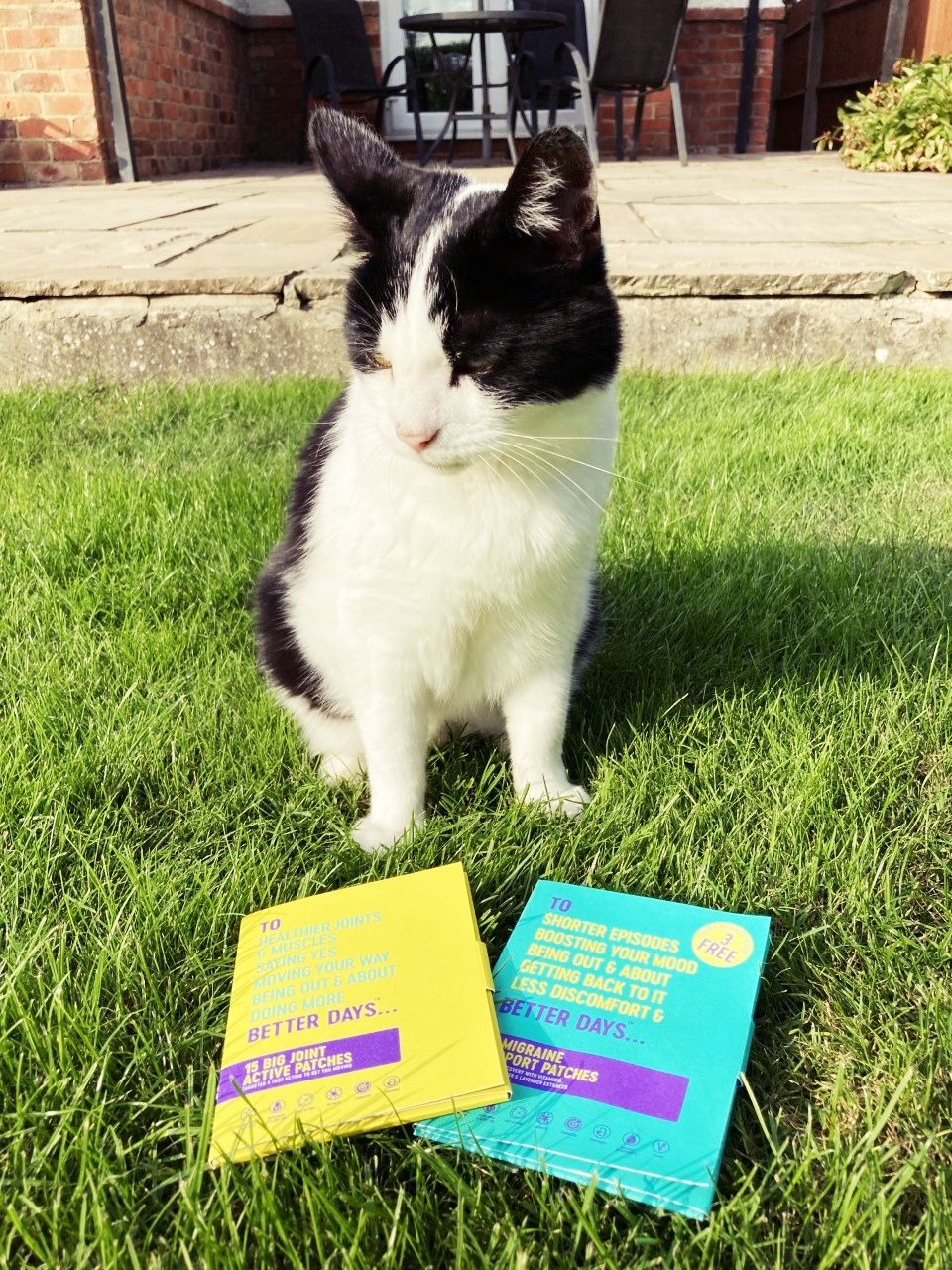
When did you try To Better Days patches and what was your experience?
I tried To Better Days patches in 2021, 6 years into living with chronic pain and having already tried a range of other products and techniques. My curiosity was piqued when I read about the novel way in which these pain patches work, from the inclusion of Vitamin D, to how they stay active on the skin for at least 24 hours. I’d never seen anything like it before.
I’ve found the patches to be incredibly convenient. You’re literally just taking a patch from the sheet, popping it on your skin and then forgetting about it, no mess and no fuss. I love that they start working immediately and that they’re so versatile. They can be used for muscles, joints and nerves, covering different pain types across the body and opening the product benefits up to more people. What’s more, there are no hideous side-effects to have to tolerate either, so it’s a win-win.
The brand itself has a down to earth and compassionate vibe. They’ve developed these products with the user in mind and they take a genuine interest in how their customers get on with the products. It’s not just about sales and statistics, it’s about helping the chronic pain community, the same community that’s often overlooked and left with very little in the way of effective treatments.
For me, the innovative To Better Days range is a priceless addition to my toolbox for managing pain and I know I’m practising good self-care by using them. They’re safe and can be used alongside other treatments, making this a great standalone or complementary product for different types of pain.
To Better Days makes the chronic pain experience a little more tolerable, it benefits my wellbeing and it allows me a little more freedom of movement to go about my day. Every little helps when it comes to pain management, and these patches are a convenient, versatile and complementary tool to have at hand.
